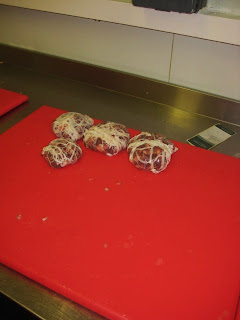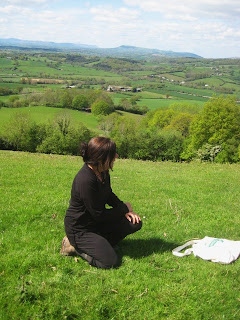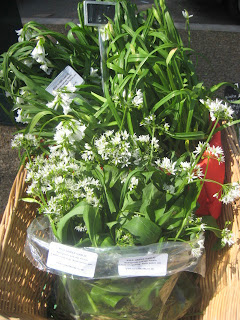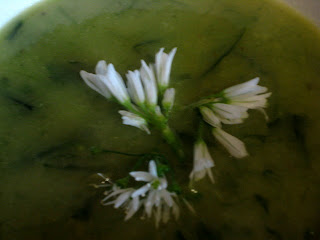Abergavenny Farmers Market runs monthly on the 4th Thursday, and brings together some
of the best producers in the area (see earlier post), but this month it has
given you even more reasons to visit with the launch of the Loyalty Card.
By signing up you get email notification of the forthcoming
markets, the producers who will be there and any special events or themes.
Well over 150 were snapped up on the first day and with participating
stall holders guaranteeing to have one discounted item for card holders at each
market you can see why. Roisin from Burren Bakery was, for example offering a
10p reduction on Cherry Scones.
Initiatives like this should encourage more people to
attend, both producers and customers, encourage a bigger spend and support and
develop the local economy.
By buying locally you reduce the supply chain (cut out the
middle man) keep money local and support the local economy.
It is estimated that of every £1 spent with a local producer
75p stays within the locality, in a Supermarket or chain store that is reduced
to 45p and online purchases have a minimal local benefit.
Not only do you support the locality but you get food at its
best, when flavour and nutrition at its peak and often cheaper than
Supermarkets. Add to this the reduction in food miles and carbon footprints and
the case for local, seasonal shopping is so strong as to be unanswerable.
Sustaination recently revealed that if a town of 15,000 spent just £5 more per week
with local traders it would be worth over £10m to the local economy.
Introducing Loyalty Cards to Farmers Markets could well be a step towards
achieving that aim.
Back
though, to the Market and the regular producers were out in force. Local vegetables,
breads, meats, chutneys and spices and pies and cakes of all varieties were on
offer, not to mention the freshest of fish, cheeses and juices.
I was
able to indulge my love of Pork Pies with a bag of award winning ones from
Elmtree who won several categories in the National Pie Awards whilst a Brie
Tart also found its way into the shopping bag. 2 kilos of butter also made it
to be cut into blocks and used over the next few weeks and both Soda Bread and
Brownies from Roisin.
Meanwhile
Mrs K discovered that local blenders Chantler Teas had produced two new blends to add to their
range of ethically sourced Black, Green and Herbally infused teas.
Abergavenny
Gold was anew blend designed for discerning tea drinkers in the area and a
special Jubilee Blend to mark the event that is not the Olympics this year. A
trial cup of Jubilee produced a satisfied smile from Mrs K and a purchase of
both new blends ensued along with some nice floral blends.
The Market
marked the Jubilee celebrations with a patriotically decorated cake, made by the very talented Michelle Woolley from Penrhiwgyngi Farm (07855 71631 / 01495 370818), and customers
stood in happy groups enjoying free tea and cake whilst planning the rest of
their shopping. (For those of us who prefer coffee the local Friends Of The
Earth group provide free tea and coffee at every market.)
The
Cake also featured in the official launch of the Loyalty Card with local chef
Stephen Terry – heavily involved in the Great British Menu Welsh heats, handing
over a symbolic first card to a lucky shopper. Stephen was a good choice for
this task as he shops in the market every Friday and champions local food both
at The Hardwick, his restaurant, and on Great British Menu.
Margaret
the Market Organiser was very happy with the launch of the Loyalty Card a
feeling shared by both customers and stall holders.
An important initiative in
supporting local producers and economies, and one which could, and should, be
more widespread.
When
you consider that the phenomenally successful Abergavenny Food Festival was
launched to revitalise the local economy after the Foot and Mouth Outbreak of
the early 2000’s Abergavenny has shown another way forward, keeping it local,
seasonal and sustainable.
Visit UK Food Bloggers Association





















































